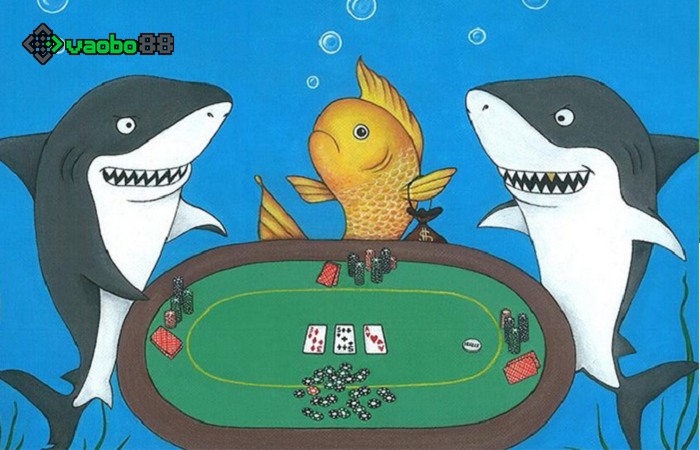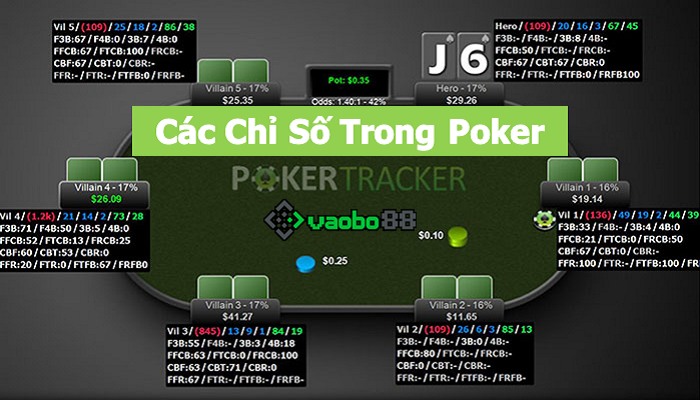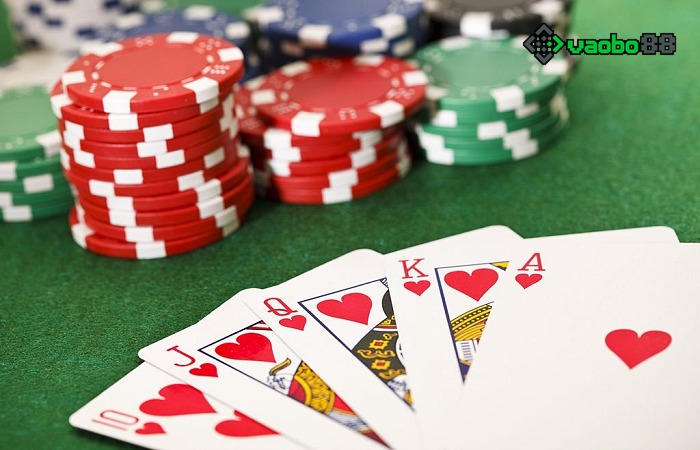The indicators in Poker will impact the players’ decisions and can help you calculate the most proficient strategies. However, many newcomers may feel confused when they first hear about them. So, let’s supplement your knowledge with the following important special indicators:
The most important indicators in Poker
If you are a professional Poker player or aiming to be one, you will understand one thing:
The Poker card game absolutely does not have victories based on luck. In the game, players will use a lot of data, analyzing their own cards against their opponents’ cards before making the final decision.

Some indicators include: Number of Outs, winning percentage of the hand, Equity in Poker… These are ratios about the chances of winning various hands, but there is another type of indicator in Poker that is important for analyzing opponents.
1/ PFR Indicator in Poker
PFR stands for Preflop Raise, which accurately means the ratio of Raise (Betting) in the Preflop round. As you know, in the Preflop round, each player only receives 2 hole cards, and no community cards have been revealed yet. With 1.7 million possibilities in Poker, no one can calculate the Equity ratio in the Preflop round. However, if you cannot calculate Equity, what basis should you rely on to make decisions without being emotional? That is the reason for the existence of the PFR indicator.
a) How to calculate the PFR indicator in Poker
This indicator will compile the actions of opponents over many hands to conclude whether they often Raise or not and what the Raise ratio is in the Preflop round. From there, you can determine whether the opponent is a tight or loose player, whether they are often influenced by opponents leading to folding or actively folding when they have a bad hand. To accurately analyze the PFR indicator, you certainly cannot evaluate an opponent based on just 5 – 7 hands; it needs to be a long-term process. According to statistical data:
- 10 hands, under 10 hands: Not accurate.
- 50 hands: Usable but not very reliable.
- 100 hands: Provides a reasonable indicator.
- 200 hands: This statistical result is very reliable.
- 500 hands: An excellent indicator, almost a precise evaluation of the opponent.
b) Application of the PFR indicator in Poker
Understanding the concept is one thing; applying it is another. Usually, the PFR indicator will accompany the VPIP indicator. VPIP is the indicator of how actively a player puts money into the POT during the Preflop round. VPIP/PFR is expressed as a percentage and specifically used to evaluate opponents as follows:
- 20/4: Very passive player, plays too tight, does not raise when the hand is not good.
- 40/12: Calls more than raises, still a tight player.
- 70/14: Calls a lot, plays many hands, passive but rarely folds.
- 16/11: This player folds a lot, plays tight, only raises or bets when they have a strong hand.
- 19/16: Still a player who folds a lot but is active, if they call, the chance of winning is over 80%.
- 23/19: Still a very tight player.
- 27/22: Calls but has a weak mentality, plays not very skillfully.
- 41/36: Calls a lot, raises a lot, and has good control.
- 76/52: Often bluffs, plays too loosely, you can follow and defeat this player.

2/ Total Aggression Factor (AF)
This is a statistic comparing the ratio of bets/raises to the ratio of calls/checks. Based on this statistic, one can assess whether the player is active or passive, and whether they bluff (aggressive play) or not. For example: A player who bets/raises in 7-8 out of 10 hands is very aggressive, playing offensively and bluffing. A player who calls/checks in more than 6 out of 10 hands is passive, with a low AF score, making them easy to read psychologically. According to statistics:
- AF from 2 – 3 is average.
- AF from 0 – 2 is low, almost never raises, passive.
- AF above 3 is active, with the highest being 10.
Understanding AF will help you grasp your opponent’s playing style. It is best not to go all-in against someone with a very high AF unless you have a large number of outs and extremely high equity.
Advanced Poker Statistics
There are also advanced statistics in Poker that you should know to calculate the standard probabilities in Poker.
1/ Fold vs BTN Open
This statistic refers to the ability to fold after being raised by an opponent, divided into first raise, second raise, third raise, and from the fourth raise onwards. You also need to have at least 200 hands (about 50 betting rounds) to provide a reasonable ratio. If you can calculate over 500 hands, that is an excellent ratio with very high accuracy.
2/ 3Bet Statistic
This is understood as the frequency of 3-betting by an opponent in the Preflop round. To explain accurately, this is an additional bet even though someone has already raised the amount.
3/ Fold to 3Bet
This statistic refers to folding when someone else raises in the Preflop round. Playing against this type of player should be gentle to lure more money into the pot and aggressive when holding a weak hand.
4/ Cbet Flop Statistic
This statistic indicates the frequency of continuous betting, having raised preflop and continuing to raise in the Flop round. This player can also continue in the next two rounds, and they are assessed as very loose, throwing money without hesitation, and enjoy psychological play. 
5/ Fold to Flop CBet
This statistic shows the ability to fold when facing a Cbet Poker through each round. In general, it indicates folding when facing continuous betting; the higher this statistic, the weaker the mentality. This person can continuously pressure bets to win.
6/ Steal
The index shows the frequency of stealing blinds; a person with a high index proves to have a very smart and unpredictable strategy.
7/ Fold to Steal
The ratio of Folding when being stolen from the blinds. If someone has a high index in this, you will easily succeed in stealing the blinds if you raise the bet from 3bet or higher.
Conclusion
Above are very important indices in Poker, and if you grasp them all, it will help you calculate the hand ratio more accurately, as well as increase your chances of winning. However, the final result still depends on many other important factors, so don’t be complacent. Some other interesting topics:
- Top 4 ways to hit the Mini Poker jackpot with detailed rules.
- Advanced Poker playing techniques & 15 tips to always win at Poker








